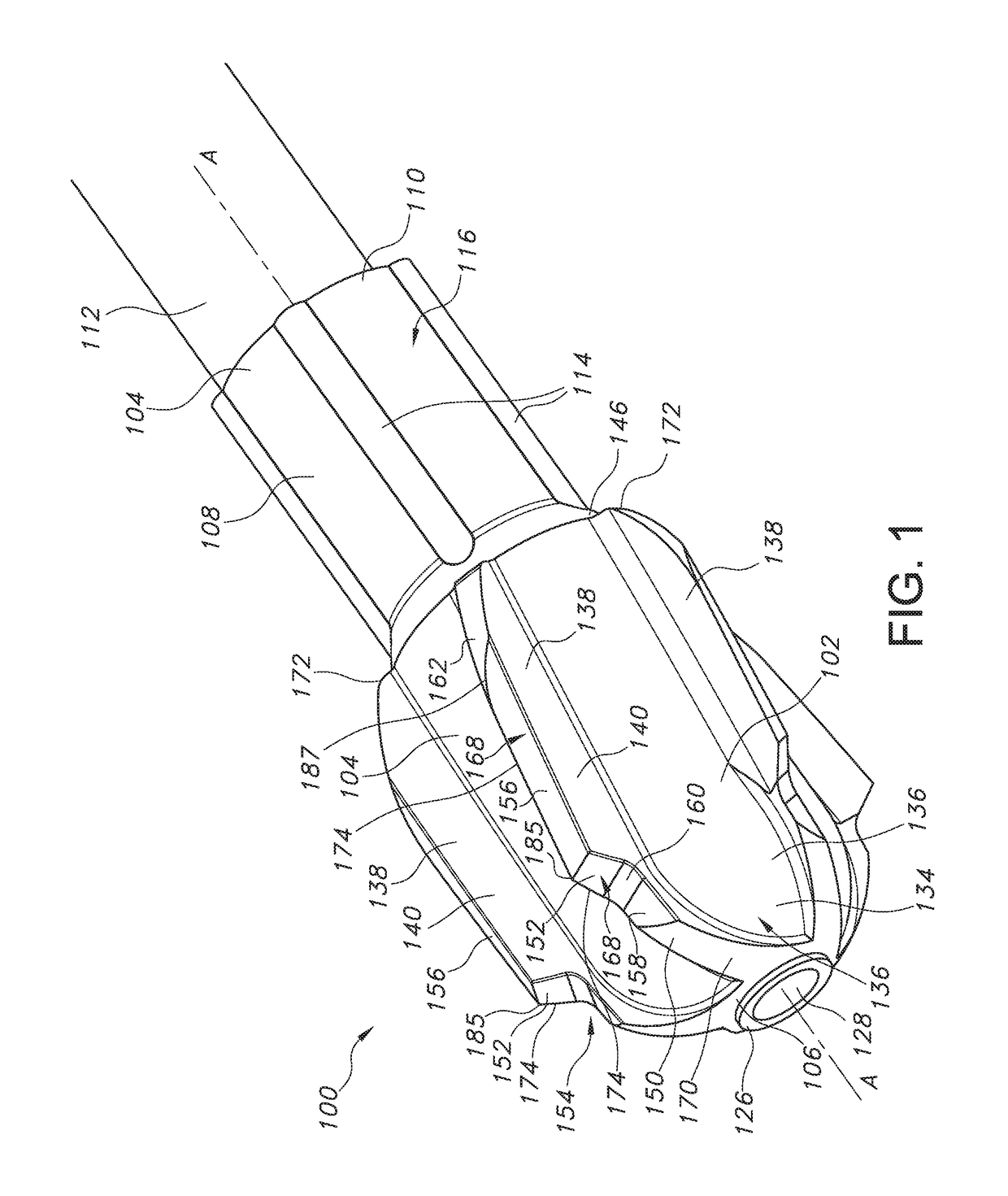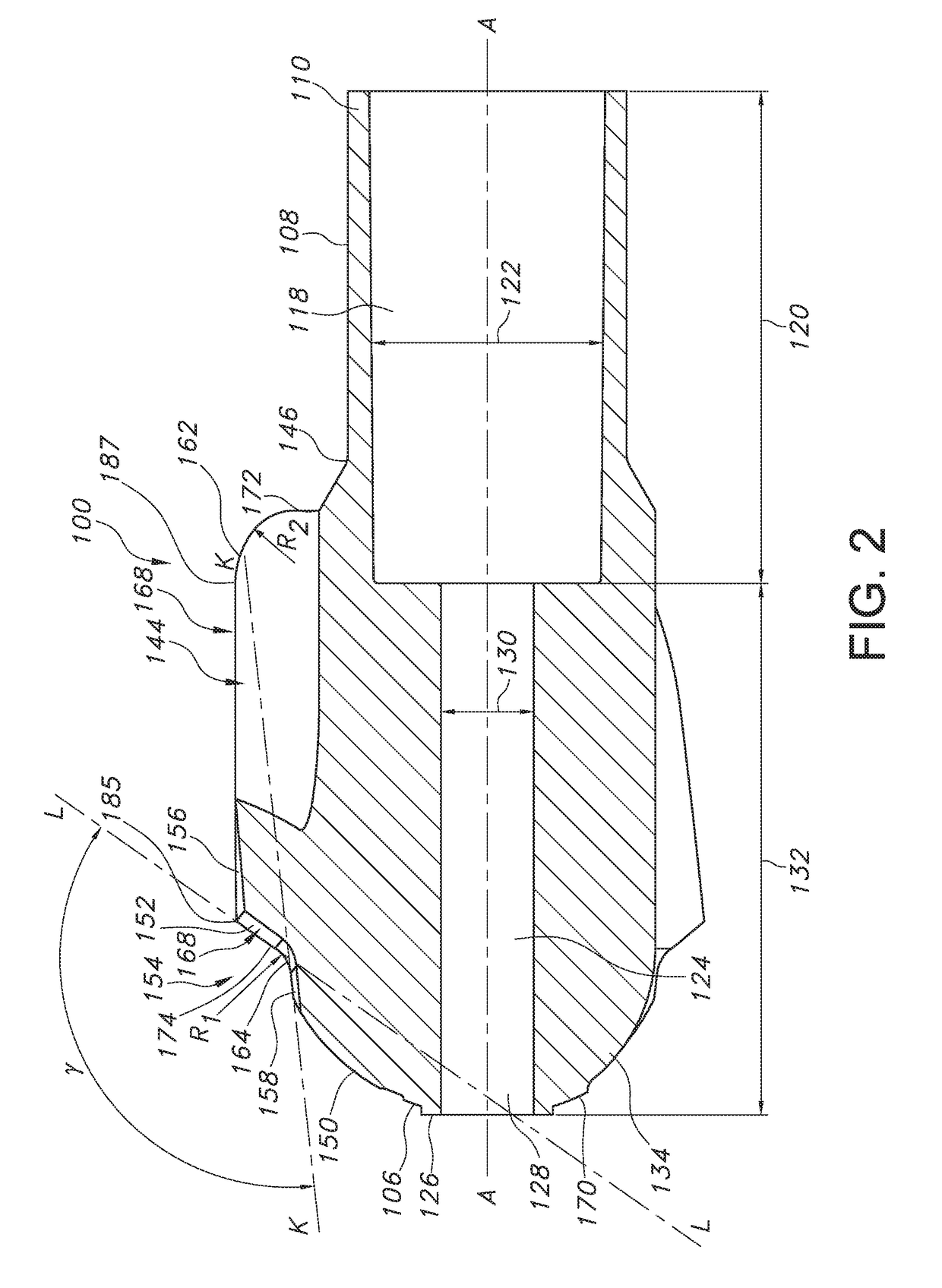Cutting head for an intramedullary reamer
- Summary
- Abstract
- Description
- Claims
- Application Information
AI Technical Summary
Benefits of technology
Problems solved by technology
Method used
Image
Examples
Embodiment Construction
[0028]Now turning to the figures, FIGS. 1-5, 8 and 9 illustrate an embodiment of a cutting head 100 that is configured to cut and remove bone and tissue from the intramedullary canal. As shown in FIG. 1, the cutting head 100 comprises a cylindrically shaped body 102 that extends along longitudinal axis A-A from a distal bone cutting portion 104 having a distal end 106 to a proximal barrel portion 108 having a proximal end 110. The bone cutting portion 104 provides for cutting and removal of bone and tissue from the intramedullary canal during a surgical procedure. The barrel portion 108 provides for a detachable connection of the cutting head 100 to a drive shaft 112 (FIG. 1). For example, a drive shaft 26 connected to a rotary motor (not shown). In an embodiment, a plurality of spaced apart ribs 114 extend outwardly from an exterior barrel surface 116. As shown in FIGS. 1 and 4, the ribs 114 extend axially and are spaced from, but parallel to the longitudinal axis A-A. The pluralit...
PUM
 Login to View More
Login to View More Abstract
Description
Claims
Application Information
 Login to View More
Login to View More - R&D
- Intellectual Property
- Life Sciences
- Materials
- Tech Scout
- Unparalleled Data Quality
- Higher Quality Content
- 60% Fewer Hallucinations
Browse by: Latest US Patents, China's latest patents, Technical Efficacy Thesaurus, Application Domain, Technology Topic, Popular Technical Reports.
© 2025 PatSnap. All rights reserved.Legal|Privacy policy|Modern Slavery Act Transparency Statement|Sitemap|About US| Contact US: help@patsnap.com



